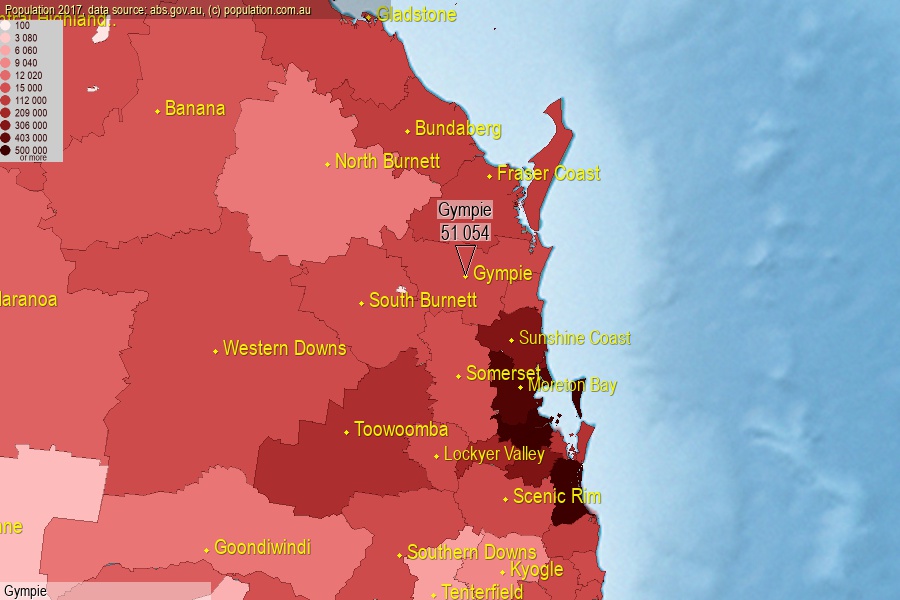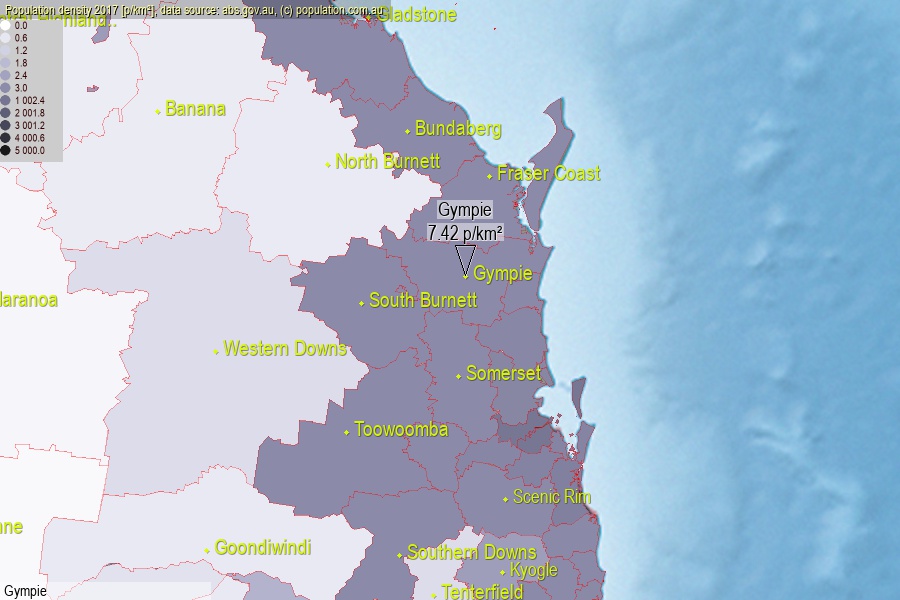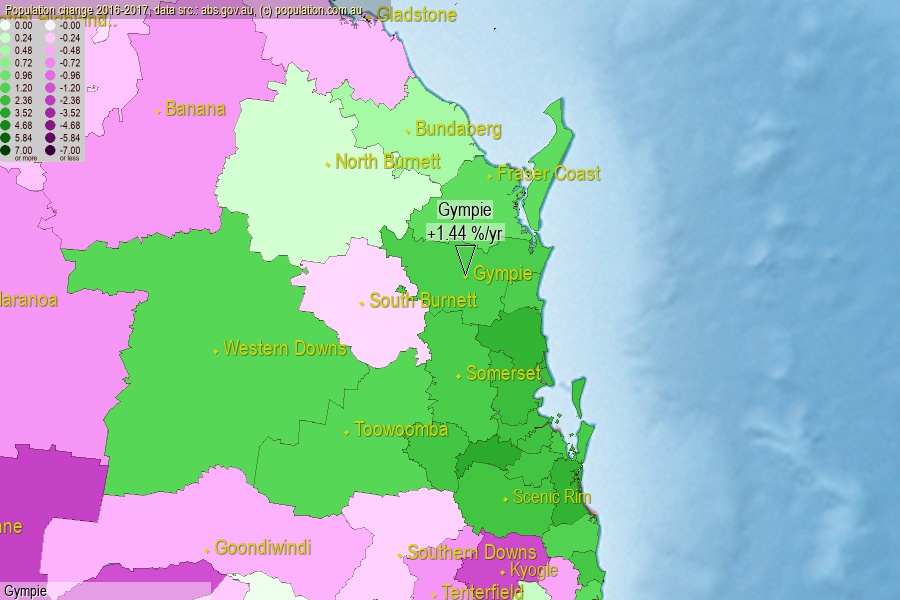 population.com.au
population.com.auLast official estimated population of Gympie Regional Council (as Local Government Area) was 51 054 people (on 2017-06-30)[2]. This was 0.21% of total Australian population and 1.023% of QLD population. Area of Gympie is 6 884.00 km², in this year population density was 7.42 p/km² . If population growth rate would be same as in period 2016-2017 (+1.44%/yr), Gympie population in 2025 would be 57 261. [0]



Click to enlarge. Gympie is located in the center of the images.
Population [people], population density [p./km²] and population change [%/year] [2]
[2001-2002] +1.28 %/Y
[2002-2003] +2.18 %/Y
[2003-2004] +2.74 %/Y
[2004-2005] +3.00 %/Y
[2005-2006] +2.27 %/Y
[2006-2007] +2.36 %/Y
[2007-2008] +2.44 %/Y
[2008-2009] +2.40 %/Y
[2009-2010] +1.29 %/Y
[2010-2011] +1.02 %/Y
[2011-2012] +2.03 %/Y
[2012-2013] +1.48 %/Y
[2013-2014] +1.23 %/Y
[2014-2015] +0.92 %/Y
[2015-2016] +1.59 %/Y
[2016-2017] +1.44 %/Y
[0] Calculated with linear interpolation from officially estimated population
[1] Read more about LGA and Australian Statistical Geography Standard (ASGS) on abs.gov.au
[2] Population data from Australian Bureau of Statistics (Population and density: 2017; change: 2016-2017)
[3] Digital Boundaries: Australian Statistical Geography Standard (ASGS) 2016.